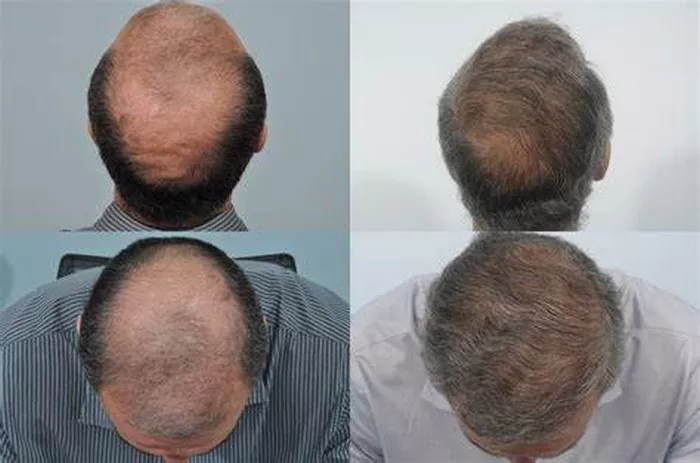Hair loss can be a distressing experience for many individuals, leading to a quest for effective solutions. Hair transplant surgery has emerged as a popular option for restoring hair, but potential patients often worry about its impact on existing hair. This article will explore whether hair transplants can damage pre-existing hair, the mechanics of the procedure, and best practices for ensuring healthy hair post-transplant.
Understanding Hair Transplants
What Is a Hair Transplant?
A hair transplant is a surgical procedure that involves relocating hair follicles from a donor area (typically the back of the scalp) to areas experiencing thinning or baldness. The two primary methods of hair transplantation are:
Follicular Unit Transplantation (FUT): A strip of scalp is removed, and individual follicular units are dissected and implanted.
Follicular Unit Extraction (FUE): Individual hair follicles are extracted directly from the scalp and transplanted.
Both methods aim to achieve natural-looking results, but they differ in technique and recovery.
How Hair Transplants Work
During a hair transplant, healthy hair follicles are transplanted into areas with thinning or no hair. The transplanted follicles retain their genetic characteristics, meaning they will continue to grow hair just like they did in the donor area.
Concerns About Existing Hair
1. Hair Follicle Health
Can Transplants Harm Surrounding Hair Follicles?
One of the main concerns about hair transplants is whether the procedure can damage existing hair follicles. Here’s what you need to know:
Trauma to Follicles: The surgical process itself involves making tiny incisions in the scalp. If performed carefully by a skilled surgeon, these incisions should not harm nearby hair follicles. However, improper technique can lead to damage.
Temporary Shedding: It’s common for existing hair to shed temporarily after a transplant, a phenomenon known as “shock loss.” This occurs as the scalp adjusts to the changes and is generally temporary.
2. The Impact of Anesthesia
Local Anesthesia and Its Effects
Hair transplants are usually performed under local anesthesia, which numbs the scalp but does not impact the hair follicles directly. However, the process can cause some inflammation, which may affect nearby hair temporarily.
3. Existing Hair Loss Patterns
Genetic Predisposition
Individuals who experience hair loss may have a genetic predisposition to thinning or balding. In such cases, existing hair may continue to thin or fall out over time, regardless of whether a hair transplant is performed.
4. Surgical Technique
Importance of Surgical Skill
The success of a hair transplant largely depends on the surgeon’s skill. A qualified surgeon will take care to minimize any trauma to existing hair follicles, employing techniques that preserve the integrity of the scalp.
Best Practices to Protect Existing Hair
1. Choose a Qualified Surgeon
Selecting a board-certified surgeon with experience in hair restoration can significantly reduce the risk of damage to existing hair. Researching reviews and before-and-after photos can also provide insight into their work.
2. Pre-Operative Consultation
During the initial consultation, discuss any concerns about existing hair with your surgeon. They can assess your hair loss pattern and create a tailored plan that addresses your needs.
3. Follow Post-Operative Care Instructions
Proper aftercare is crucial for protecting both transplanted and existing hair. Follow these guidelines:
Gentle Cleansing: Use a mild shampoo recommended by your surgeon to clean the scalp gently.
Avoid Scratching: Resist the urge to scratch the scalp, as this can irritate existing hair follicles.
Limit Physical Activity: Avoid strenuous exercise for at least a week post-surgery to minimize sweat and irritation.
Recovery Process and Its Effects on Existing Hair
1. The Healing Timeline
Initial Recovery Phase (Days 1-7)
During the first week after the procedure, patients may experience swelling, redness, and scabbing. It’s essential to manage these symptoms carefully to avoid disturbing existing hair.
2. Shock Loss
Understanding Temporary Shedding
Shock loss can occur in both transplanted and existing hair. Typically, this shedding is temporary, and most patients see regrowth within a few months.
3. Long-Term Growth
Continued Hair Health
Once the scalp has healed, both transplanted and existing hair follicles can thrive. The health of existing hair can also improve due to enhanced blood circulation in the scalp following the procedure.
Signs of Damage to Existing Hair
1. Persistent Shedding
If existing hair continues to shed beyond the initial shock loss phase, it may be a sign of potential damage or underlying issues.
2. Thinning of Existing Hair
If you notice that existing hair is thinning significantly after the transplant, consult your surgeon to assess any possible issues.
Conclusion
A hair transplant, when performed by a qualified surgeon, should not damage existing hair. While temporary shock loss may occur, it is typically reversible, and many patients experience improved hair health after the procedure. Following proper pre-operative and post-operative care is essential for protecting both transplanted and existing hair.
Understanding the mechanics of hair transplants, recognizing the potential for temporary shedding, and adopting best practices can help patients achieve optimal results. For those considering a hair transplant, consulting with a trusted professional can provide reassurance and guidance on navigating the journey toward hair restoration.
Related topics:
- Is Hair Transplant Permanent? Knowing Pain and Longevity
- When Can I Drink Alcohol After FUE? A Complete Guide
- When Can You Scratch Your Head After FUE Hair Transplant?


